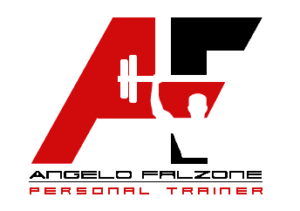What Do Capillaries Do: A Comprehensive Overview
Capillaries are an essential part of our circulato ottomax+ recenzery system, functioning along with arteries and also veins to ensure the efficient transport of blood throughout the body. While arteries carry oxygen-rich blood far from the heart, veins play a critical role in returning oxygen-depleted blood back to the heart for reoxygenation. In this post, we will explore the features and also importance of capillaries in the body.
The Makeup of Veins
Veins are capillary that carry deoxygenated blood from numerous components of the body back to the heart, where it can be reoxygenated. Structurally, veins have some unique attributes that separate them from arteries:
1. Valves: Among the distinct functions of veins is the presence of valves. These shutoffs prevent the backwards flow of blood, ensuring that it relocates the appropriate direction. This device is important, specifically in the reduced extremities, where blood circulation versus gravity can be difficult.
2. Thinner Walls: Compared to arteries, veins have thinner wall surfaces. This is because capillaries transportation blood at a reduced stress than arteries, as the pressure of the heart beat lessens as blood takes a trip back to the heart.
3. Larger Diameter: Blood vessels typically have a larger diameter than arteries. This is due to the fact that capillaries have to accommodate a larger quantity of blood to guarantee reliable return to the heart.
- Deep Blood vessels: These veins are located deep within the body and typically run alongside significant arteries. They are accountable for collecting blood from muscles as well as organs, returning it to the heart.
- Shallow Capillaries: These capillaries lie closer to the surface of the skin as well as show up in some individuals. They play a substantial duty in regulating body temperature level.
- Perforator Veins: These veins attach the deep veins to the shallow blood vessels. They have valves that prevent blood from flowing in the incorrect direction.
It is necessary to comprehend the framework of capillaries to completely appreciate their features.
The Features of Veins
The main function of veins is to move deoxygenated blood back to the heart. Nevertheless, their duty extends beyond this basic job. Let’s discover the various functions of blood vessels:
1. Return Deoxygenated Blood: Veins efficiently collect blood from cells and body organs throughout the body as well as return it to the heart. By doing so, blood vessels create a constant circulation loophole that makes sure oxygen-depleted blood is restored with oxygen.
2. Serve as Blood Reservoirs: Blood vessels have a high capacitance, meaning they can stretch and also hold a significant volume of blood. In times of boosted physical activity or stress and anxiety, veins can tighten, properly redistributing blood circulation to important organs such as the heart and brain.
3. Facilitate Waste Removal: Besides bring deoxygenated blood, veins also deliver waste products, such as co2 as well as metabolic byproducts, back to the heart as well as lungs for elimination from the body.
4. Keep Venous Return: Venous return refers to the quantity of blood going back to the heart. Blood vessels play a crucial duty in maintaining adequate venous return, which makes certain correct heart output, blood pressure policy, and overall circulation.
5. Control Body Temperature: Surface capillaries located near to the skin assistance control body temperature level. During cozy conditions, these capillaries dilate, allowing even more blood to stream near the skin’s surface, facilitating warmth dissipation. Alternatively, in chilly conditions, these veins constrict, decreasing blood circulation near the skin to preserve warmth.
Usual Vein Disorders
While blood vessels perform crucial functions, they can likewise be vulnerable to numerous disorders. Some common vein disorders include:
- Varicose Veins: Varicose veins take place when the valves otovix in veins end up being weak or harmed, bring about blood pooling and also capillary enhancement. This condition usually influences the legs, triggering discomfort, discomfort, as well as noticeable outcroppings.
- Deep Vein Apoplexy (DVT): DVT is a problem where a blood clot kinds in a deep blood vessel, usually in the leg. If the clot removes and takes a trip to the lungs, it can result in a pulmonary blood clot, a possibly dangerous condition.
- Spider Veins: Spider veins are smaller sized, expanded blood vessels that typically show up on the surface of the skin. While they are generally safe, they can create aesthetic concerns for some individuals.
- Chronic Venous Deficiency: This condition happens when the valves in blood vessels are damaged, causing insufficient blood recede to the heart. It can create signs and symptoms such as swelling, discomfort, and also skin changes.
If you believe you might have a blood vessel problem, it is important to consult with a health care specialist for an accurate diagnosis and proper therapy.
Final thought
Capillaries play an important function in the blood circulation system, guaranteeing the reliable transportation of deoxygenated blood back to the heart. Their features encompass not only returning blood however additionally managing body temperature level, maintaining venous return, and helping with waste elimination. Recognizing the significance of capillaries and also identifying possible conditions can help us value the significance of correct vein health and look for timely medical intervention when required.
